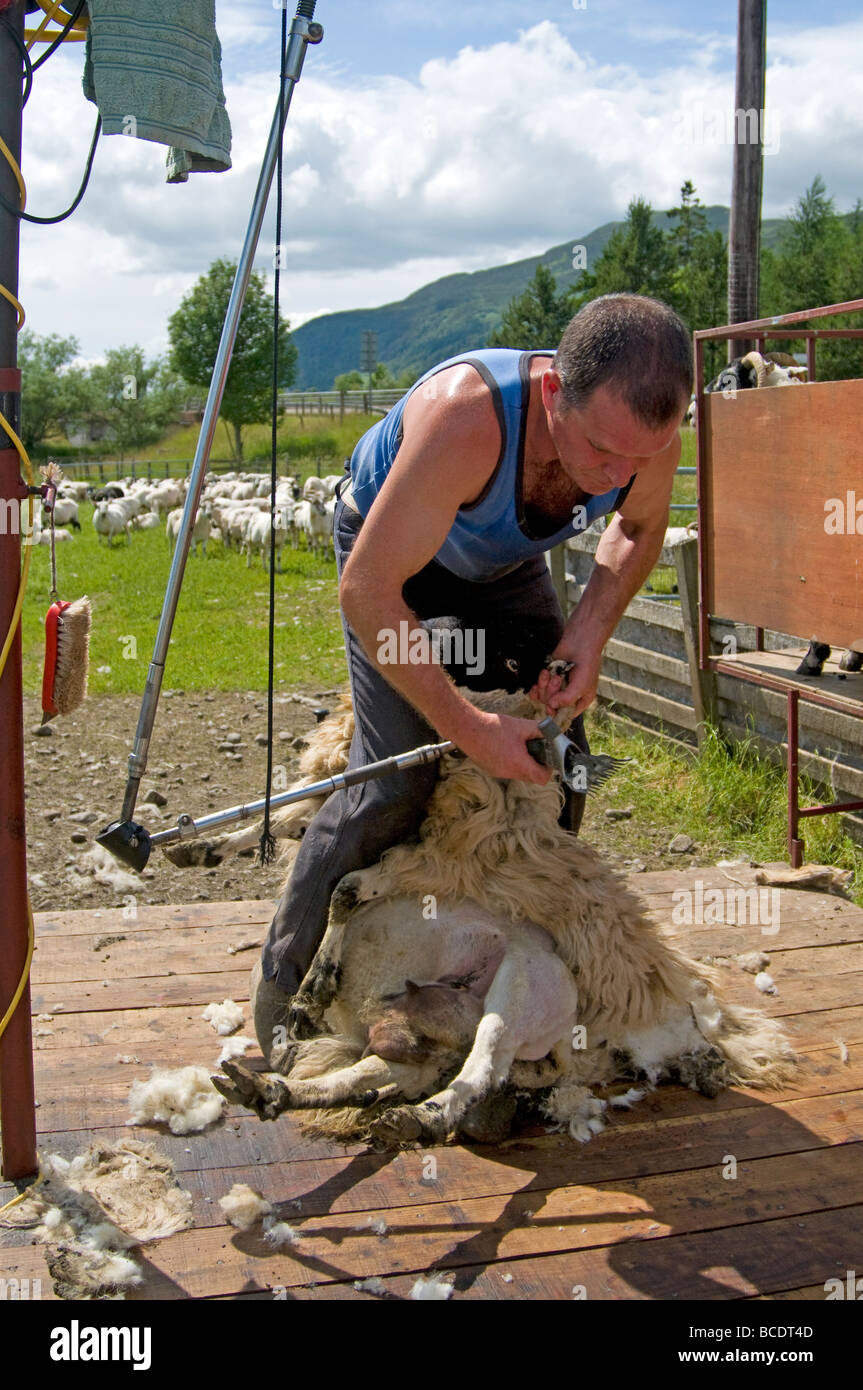Summer Sheep shearing in Strathspey Scottish Highlands

Image details
Contributor:
David Gowans / Alamy Stock PhotoImage ID:
BCDT4DFile size:
60 MB (2.5 MB Compressed download)Releases:
Model - no | Property - noDo I need a release?Dimensions:
3732 x 5619 px | 31.6 x 47.6 cm | 12.4 x 18.7 inches | 300dpiDate taken:
July 2009Location:
Newtonmore Inverness-shire Highland Scotland UKMore information:
Today, large flocks of sheep are shorn by professional shearing teams working eight hour days, most often in spring, by machine shearing. These contractor teams will consist of shearers, shed hands and a cook (in the more isolated areas). The shed staff working hours and wages are regulated by industry awards. A working day starts at 7:30 AM and the day is divided into four “runs” of two hours each. “Smoko” breaks of a half hour each are at 9:30 AM and again at 3:00 PM. The lunch break is taken at 12:00 PM for one hour. Most shearers are paid on a piece rate, i.e., per sheep. Shearers who “tally” more than 200 sheep per day are known as “gun shearers”. Typical mass shearing of sheep today follows a well-defined workflow: remove the wool, throw the fleece onto the wool table, skirt, roll and class the fleece, place it in the appropriate wool bin, press and store the wool until it is transported. Machine shears, known as handpieces, operate in a similar manner to human hair-clippers in that a power-driven toothed blade, known as a cutter, is driven back and forth over the surface of a comb and the wool is cut from the animal. The original machine shears were powered by a fixed hand-crank linked to the handpiece by a shaft with only two universal joints, which afforded a very limited range of motion. Later models have more joints to allow easier positioning of the handpiece on the animal. Electric motors on each stand have generally replaced overhead gear for driving the handpieces. The jointed arm is replaced in many instances with a flexible shaft. Smaller motors allowed the production of shears in which the motor is in the handpiece; these are generally not used by professional shearers as the weight and heat of the motor becomes bothersome with long use.